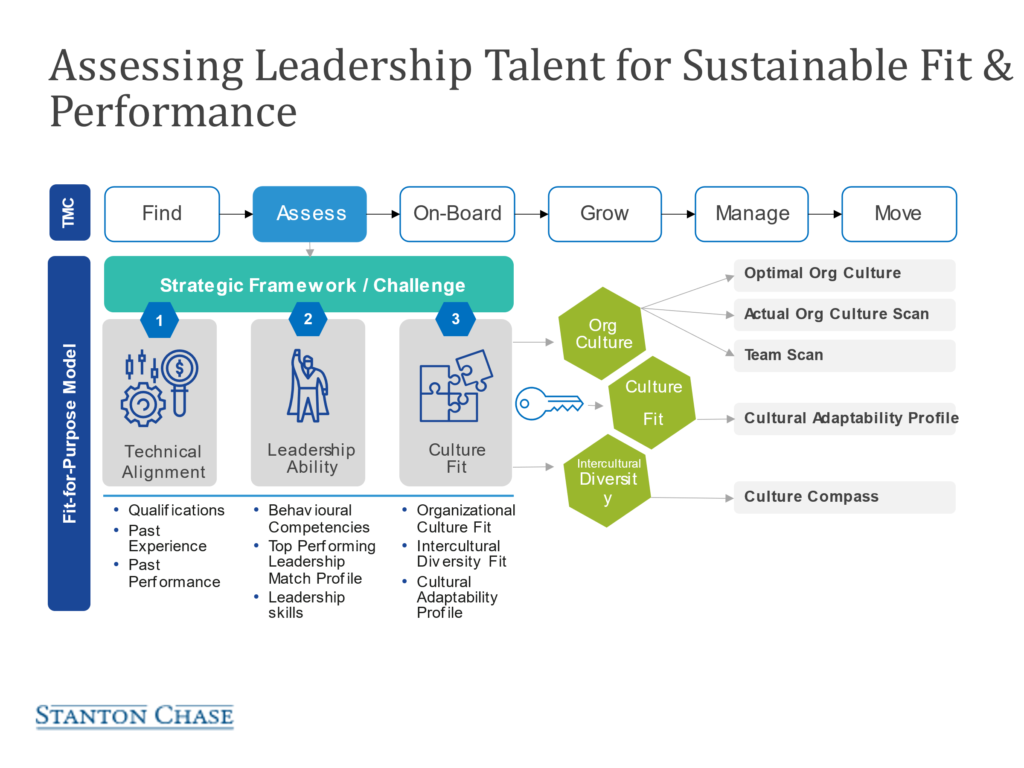
Making the most of psychometric tests to raise the talent bar
Businesses in the United Kingdom and the European Union are seeing fewer candidates and heightened competition for talent across multiple sectors thanks to a series of demographic, economic, and social trends. As employees look toward life after Covid, many are reconsidering their career choices and priorities – and deciding it’s time for a change.
This gives HR Directors many problems but also a unique opportunity to raise recruitment standards, advance their DE&I agenda, and build their employer brand through the application of leading scientific tools. Companies are facing greater scrutiny of and by their work force on ethnicity, gender, age, and social issues. Leading organizations are seeking ways to create workplaces that reflect the diversity of the population they serve; they understand the importance of being seen to be fair and just in dealing with employees and all stakeholders. Leaders are looking to create a workplace where people feel integrated and included, where their voice is heard every day.
As the pressure on HR Directors increases, recent scientific advances mean that psychometric tests are now indispensable tools to enable broader objective assessment of current and future employees.
Five Issues Facing HR Directors Today
There are five pressing issues that HR Directors currently face that present a series of urgent challenges:
- Ensuring sufficient challenge of the role description and person specification.
When a vacancy arises, it’s always urgent. Will the HRD or Talent Acquisition Head take time to step back and question which parts of the specification are no longer essential, how the potential talent pool could be broadened, and how we may be able to consider someone who looks, sounds, or thinks differently from the previous job holder? - Video interviewing
Face-to-face interviews (even by a well-trained interviewer) have always been overrated for their predictive validity, and now with the single dimension and remote interaction of interviewing over Zoom or Teams, despite the benefits of ease of access, interviewers are making key recruitment decisions based on even less information - The impact of limited skills or biases of assessors
In my 30 years in HR, I have consistently encountered colleagues at all levels of seniority whose interview skills and people judgement were subject to conscious or unconscious bias. The recruitment process owner needs to ensure conscious inclusion throughout the assessment. - Alignment vs. groupthink
When the assessment panel meets to review the final candidate slate, the responsibility of the HRD or Talent Acquisition Head is to fully consider each of the candidates and their relative merits versus the desired specification, and to achieve this they need as much relevant, objective data on each candidate as possible. HRDs have a responsibility to manage the assessment panel as the risk to the company of a bad hire, or the opportunity cost of missing a strong hire, is growing each year. - Ensuring positive candidate experiences
There may only be one final successful hire, but what will the unsuccessful candidates be telling family, friends, and colleagues about their personal experience of the company and recruitment process? The company’s reputation is on the line at every stage.
To address this final issue right away, HRDs and Talent Acquisition Heads should level up the process for candidates. Some ways may include:
- Brief and prepare candidates for each stage of the process
- Monitor the progress of different candidate profiles throughout the assessment process
- Provide opportunities for candidates to disclose any specific concerns they may have
- Make accommodations for the wide variety of disability and neurodiversity needs as appropriate during the assessment process
- Use tests which are proven to have no differences across ethnic groups.
- Provide feedback at the end of the process to all candidates
More guidance on ‘leveling up’ by fostering belonging, inclusive leadership, and diversity can be found in my colleague Eleri Dodsworth’s recent paper on the subject.
Over the past six months, I have been researching different psychometric tools in the market and been impressed by the range, quality, and scientific depth now available. I have looked at tools provided by Hogan, SHL, Saville Assessment and Hofstede and, as a result, I believe HR Directors can raise the bar on each of the issues raised above.

Type Vs. Trait Tools
Many people’s experience with psychometric tests will have started with ‘type’ based tests such as Myers Briggs that divide people into a series of categories, usually in four scales. These type-based tests are neat to present and easy to explain but limited in applicability in the workplace as we seek to consider specific aspects and complexities of an individual’s personality.
Most of the tools I have researched for personality and leadership assessment have been ‘trait’ based, assigning a score on one or more scales that measure a group of attributes. These scores can be complex to interpret as the attributes may interact differently, and some aspects of an individual’s personality may relate to a specific situation or context.
Detailed Competency Model
In order to address an individual’s characteristics, the Saville Assessment ‘Waves’ tool contains 108 different facets, and subjects respond to each one in two ways – free and forced choice – with the resulting 216 data points providing a high level of validity and reliability. The Waves tool describes a personality within a hierarchical model of competencies, traits, motives, and talents that predicts behaviors in the workplace.
High Predictability
I’ve also been curious to learn more about the Hogan approach. The Hogan suite assesses your reputation (i.e. what others say about you rather than how you describe yourself) and then benchmarks you against other people who gave the same answer. Hogan now has over 10 million data sets with 400 studies on performance correlation. This ongoing validation results in high levels of predictability and importantly, no differences in age, gender, or ethnicity. The tests are available in 45 languages and have been adapted for cultural nuances and appropriateness so language barriers can also be removed. Hogan claims this results in a 95% correlation to job performance.
Leadership Framework
The Stanton Chase Leadership Framework (See Figure 1) aligns the three areas that we can address with psychometric tests and maps these areas to a company’s vision, mission, and strategic goals.

The technical and personal skillsets address the technical depth required, alongside an individual’s grasp of business fundamentals and ‘best practice’ approach. A company’s evaluation can be supplemented with psychometric tests for verbal reasoning, numerical analysis, and cognitive and spatial awareness, alongside many more role specific skills.
In addressing leadership ability, the Hogan and Waves tools provide a reliable assessment of the specific leadership traits required for a particular role and context, and importantly, organizational agility and potential. These tests have been shown to spot talent and potential more accurately than interviewing alone, with Saville Assessment benchmarking results against norm groups of up to 10,000 participants. In using these tests for the past six years, I have also been reassured by encountering examples of candidate ‘blind spots’ and faking: the interaction of facets, motives, and talents can result in candidates suffering cognitive overload and then presenting their true self rather than the ‘interview mask’. That is so welcome – we need to understand the real person, not the character they are trying to portray!
The Hogan suite of tests comprises three different and complementary tools. Firstly, the HPI assesses a candidate’s everyday strengths and weaknesses and whether they can do the job – the bright side of their personality that they wish to portray. The MVPI looks inside the candidate at the personal goals, interests, and conscious and unconscious drivers to predict whether they will enjoy the job. Finally, the HDS looks at the person’s dark side and measures risk factors and overused strengths that may get in the way of performance and could derail a career.
Saville Assessment have also developed ‘Wave-i’ as a structured process to identify emerging talent involving internal and external benchmarking and candidate evaluation, sidestepping individual line manager biases. The tool assesses an individual’s natural leanings and identifies different types of career and leadership roles. The core element is baseline potential, then filters are applied by career streams based on experience, track record, and level of ambition.
This brings transparency and objectivity around the talent pipeline process, rather than relying on manager or HR nominations.
Culture Fit
The third element of the Stanton Chase leadership framework assesses culture and strategy fit – how decisions get made and how leaders get others to achieve results in a particular team. Is the company looking to hire for change or for continuity, and which areas are the highest risk? How likely is the person to stay in the organization?

The Hofstede Team Scan Assessment provides insights into working practices measured and their link to organizational values. Team output can be compared to expectations on working practices given by applicants, providing insights into whether business can continue as usual or whether there is likely to be a misalignment of values and practices.
Secondly, the Culture Compass provides individual value preferences, and when compared to a Team Scan enables companies to draw conclusions on the emotional sustainability of working practices in certain cultures, and the emotional fit with existing team members.
The third Hofstede tool, the Cultural Adaptability Profile (CAP), provides insights into an individual’s cultural adaptability. The CAP enables companies to assess particular elements of a person’s ability to adjust in order to fit, or to adjust in order to bring a team along on a transformation path. This tool is best used from a developmental rather than recruitment perspective.

Digital Readiness
One recent novel psychometric assessment has been developed by SHL, which has devised an assessment for an individual’s digital readiness. Individuals are assessed against competencies that have risen to pre-eminence as the pace of change accelerates and individuals need to navigate in a digital environment and lead business transformation and innovation. The four behavioral competencies are continuous learning, execution excellence, network performance, and insightful analytics. This assessment can be a timely intervention to assess capabilities ahead of a major change initiative.
Board Or Senior Team Assessment
In addition to individual assessments, Stanton Chase can provide group assessments as required. Typically, these assessments will be of a senior team of three or more people who share a common leader, a common goal, and are dependent on each other, succeeding or failing together. Such an assessment is available to help to optimize a team, as part of an annual board assessment, when a team is forming or adding a new member, when a team is underperforming or dysfunctional, or as part of an M&A process.
Bespoke assessments, based on the leading intellectual property and psychometric tools outlined above, can help to provide an objective, rigorous intervention.
Five Key Steps For HR Directors
In conclusion, psychometric tests can significantly add to the rigor and objectivity of the assessment process and significantly advance diversity, equity, and inclusion within companies if HRDs take the following five steps:
- Challenge the specification of role and person
- Prepare the process and align the assessors
- Use the best scientifically proven tools to provide objectivity and consistency
- Ensure rigour in recruitment processes at all levels of your organization in order to build diversity throughout your pipeline
- Ensure the best possible candidate experience
In following these steps, HRDs will not only advance the DE&I agenda but will also de-risk key people decisions, raise the talent bar, and build their company’s reputation for rigorous quality standards.
About the Author:
Tony Bainbridge is Partner for Leadership & Board Assessment in the London office of Stanton Chase. After gaining classic ‘blue chip’ HR training in Mars and PepsiCo, Tony has held a variety of HR leadership positions at organizations including Novartis, InterContinental Hotels Group (IHG) plc, and most recently Wilmington plc. Additionally, he served as Managing Director for CIBAVison France, the French market leaders in optical and surgical products, for three years. Tony left Wilmington plc in July 2020 in order to become an adviser on talent, leadership, and organisational change. He is certified to administer a variety of leading psychometric tests and is based in the United Kingdom and Spain.
Sources:
‘A Holistic DEI Approach on People, Process, and Technology Best Practice Guide’- SHL (2021)
‘It Takes a Global Village to Foster Belonging, Inclusive Leadership, and Diversity’ – Eleri Dodsworth (2021)
‘What Can We Do to Help You Improve Diversity and Inclusion (D&I) in Selection Assessment’ – Saville Assessment (2021)
‘Hire Leaders for What They Can Do, Not What They Have Done’ – Josh Bersin, Tomas Chamorro-Premuzic (HBR 2019)
‘Is Your Assessment Process Achieving All the Outcomes that Matter?’ Martin Kavanagh (2018)
Company documents provided by Hogan Assessments, Saville Assessment, SHL, Hofstede Insights, Stanton Chase
How Can We Help?
At Stanton Chase, we're more than just an executive search and leadership consulting firm. We're your partner in leadership.
Our approach is different. We believe in customized, personal, and fearless executive search, executive assessment, board services, succession planning, and leadership onboarding support.
We believe in your potential to achieve greatness and we'll do everything we can to help you get there.
View All Services